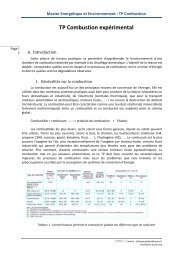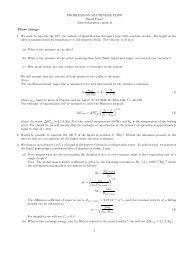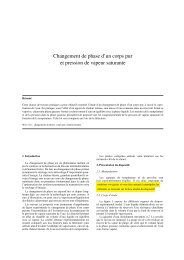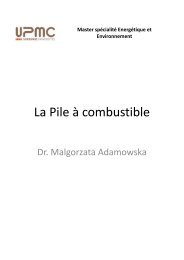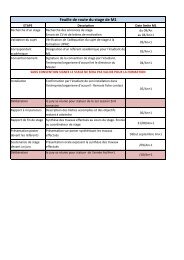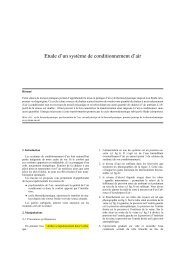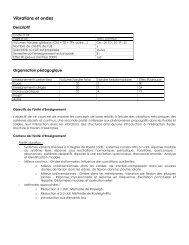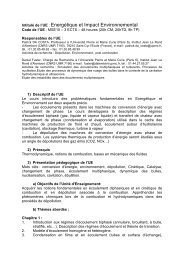CHAPITRE 1: Notions de thermodynamique - Master 2 en ...
CHAPITRE 1: Notions de thermodynamique - Master 2 en ...
CHAPITRE 1: Notions de thermodynamique - Master 2 en ...
You also want an ePaper? Increase the reach of your titles
YUMPU automatically turns print PDFs into web optimized ePapers that Google loves.
Gestion <strong>de</strong> l’Energie et Environnem<strong>en</strong>t<br />
3. Les différ<strong>en</strong>tes formes d’énergie<br />
3.2. Energie nucléaire<br />
• 6 - 7% <strong>de</strong> la production énergétique mondiale<br />
• Energie très <strong>de</strong>nse : 1 kg d'Ur utilisé dans un réacteur à eau est l'équival<strong>en</strong>t énergétique<br />
<strong>de</strong> 10 tonnes <strong>de</strong> pétrole, 60 réacteurs couvr<strong>en</strong>t 80 % <strong>de</strong> la production d'électricité <strong>en</strong><br />
France.<br />
Energie Avantages Inconvéni<strong>en</strong>ts<br />
Nucléaire<br />
- pas <strong>de</strong> pollution ni <strong>de</strong><br />
rejet <strong>de</strong> gaz à effet <strong>de</strong><br />
serre<br />
- adaptée à la production<br />
<strong>de</strong> gran<strong>de</strong> échelle<br />
- gestion <strong>de</strong>s déchets sur <strong>de</strong><br />
longues pério<strong>de</strong>s<br />
- pas <strong>de</strong> sûreté passive<br />
Production <strong>de</strong> 1000<br />
MW p<strong>en</strong>dant 1 an<br />
25 tonnes d'Ur <strong>en</strong>richi<br />
à4%<br />
<strong>CHAPITRE</strong> 2: Besoins énergétiques actuels et pot<strong>en</strong>tiels dans le mon<strong>de</strong><br />
71





